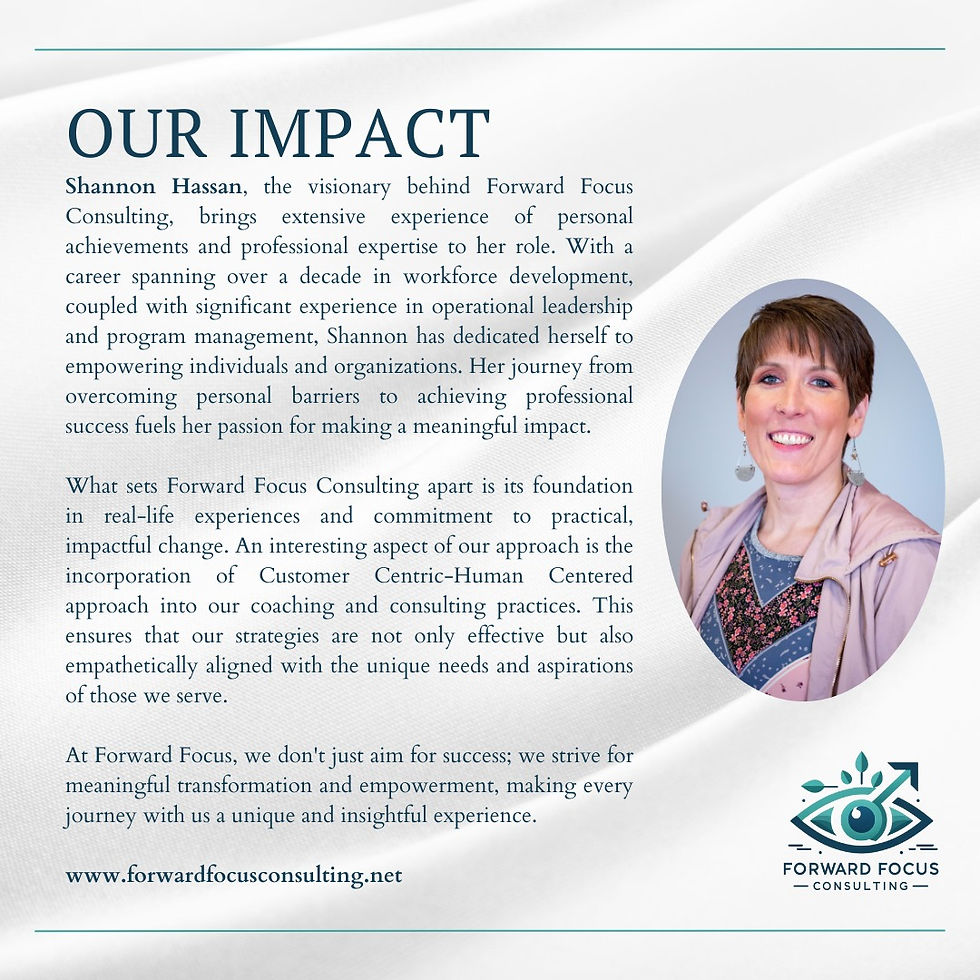
Charting the Path to True Inclusivity: Lessons from DEI Leadership
- shannonhassan8

- Mar 2, 2024
- 2 min read
Achieving True Inclusivity with Cultural Competence and DEIA
Leading Diversity, Equity, Inclusion, and Accessibility (DEIA) and/or Justice, Equity, Diversity Inclusion (JEDI) initiatives across various settings has provided me with invaluable insights into the complexities of fostering true inclusivity within organizations. The challenges of navigating "in" vs. "out" group dynamics, coupled with my personal journey through a biracial household, have highlighted the profound need for cultural competence and an all-inclusive approach grounded in DEIA or JEDI principles. This comprehensive exploration draws upon these experiences to offer a roadmap for cultivating a workplace and society where diversity is not just acknowledged but celebrated. For this post we will use DEIA.
Cultural Competence and DEIA as Pillars of Inclusivity:
Cultural competence and DEIA form the foundation of genuine inclusivity. These principles demand more than mere acknowledgment of diversity; they require an active commitment to understanding, valuing, and integrating diverse perspectives into the framework of our organizations. From my leadership vantage point and personal experiences, fostering cultural competence has emerged as a vital strategy in not only bridging cultural divides but also in enriching our collective experience.
Overcoming "In" vs. "Out" Group Dynamics:
The dichotomy of "in" vs. "out" groups within organizations can significantly hinder the achievement of true inclusivity. Addressing this challenge involves dismantling preconceived notions and biases, promoting open and honest dialogue, and nurturing an environment where curiosity and empathy prevail. Leaders must spearhead this cultural shift, demonstrating a commitment to DEIA by creating spaces where all individuals feel safe to share, learn, and grow.
The Role of Leadership in Fostering an Inclusive Culture:
Effective leadership is crucial in navigating the path to inclusivity. My experiences have underscored the importance of leaders who embody openness, curiosity, and a genuine willingness to engage with diverse perspectives. By setting a precedent for continuous learning and empathetic engagement, leaders can inspire their organizations to move beyond mere tolerance to a deeper, more meaningful embrace of diversity and inclusion.
Embracing Curiosity to Challenge Assumptions:
A key lesson from leading DEI committees and navigating cultural diversity within my household is the transformative power of curiosity. By encouraging individuals to ask questions and seek understanding, we can challenge harmful assumptions and foster a culture where diverse perspectives are not only heard but valued. This approach is essential for breaking through cultural barriers and building connections that transcend differences.
The journey towards true inclusivity is both challenging and rewarding, requiring a nuanced understanding of cultural competence, DEIA principles, and the pivotal role of leadership. By drawing on personal experiences and lessons learned from DEI leadership, we can chart a course towards a more inclusive future. This path calls for challenging our assumptions, embracing curiosity, and fostering an environment where every individual, regardless of their background, feels valued and understood.
I encourage you to reflect on your experiences with inclusivity, cultural competence, and DEIA. How can you contribute to fostering an all-inclusive environment in your sphere of influence? Share your insights and commitments to promoting a culture of understanding and empathy, and let's collectively work towards a more inclusive world for all.






Comments